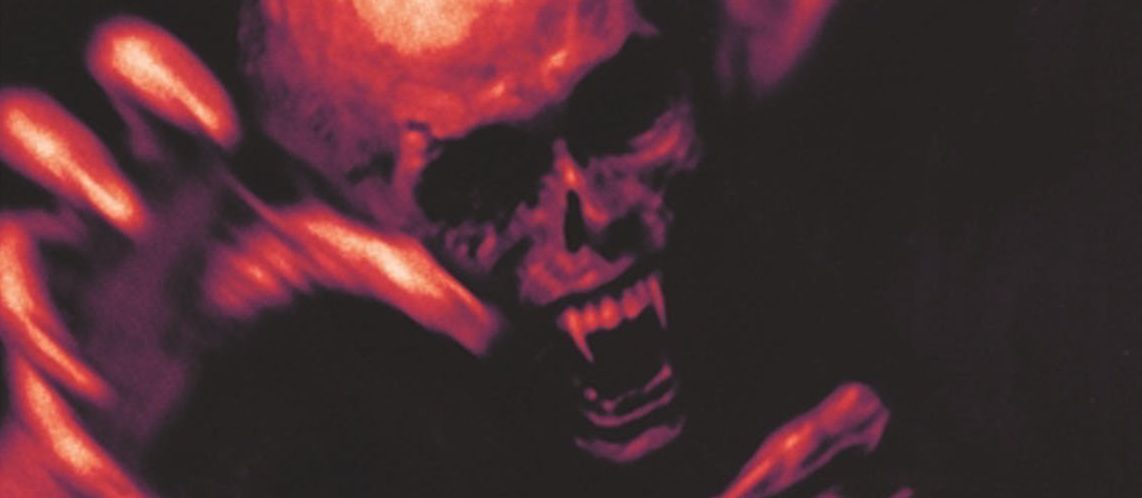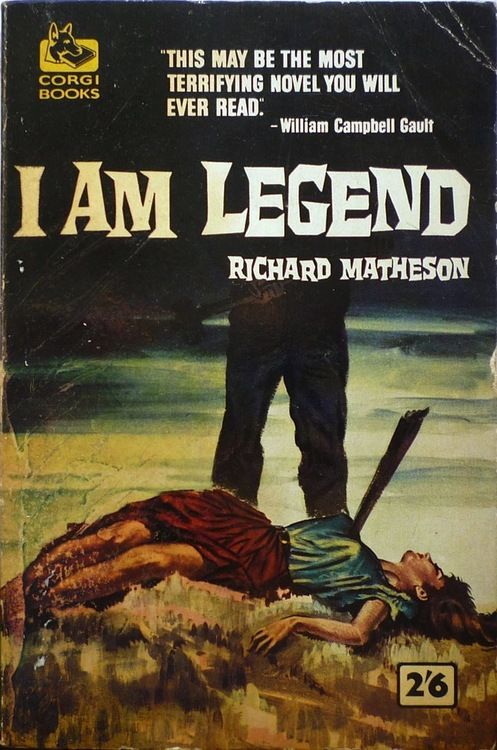

“Here we are, kiddies, sitting like a bug in a rug, snugly, surrounded by a battalion of blood-suckers who wish no more than to sip freely of my bonded, 100-proof hemoglobin.”
Reinvigorating a flailing genre and popularizing the worldwide zombie apocalypse scenario, Richard Matheson’s I Am Legend has been a constant inspiration for creators working in the horrific and post-apocalyptic realms since its release. It’s been a touchstone for the books of Stephen King, the films of George A. Romero, and the Fallout video games among many other things. Blending elements of horror with light science fiction as well as some bona fide science, the book primarily features a single character who believes himself to be the last man on earth. He’s not a hero, though, just a survivor of a worldwide plague that has ravaged the population, killing some, sparing others, but inflicting them all with what our protagonist calls “vampirism,” raising an undead army that is actually a terrifying hybrid of zombies and vampires. But a surface-level description of its conflict doesn’t begin to capture the book’s essence. It is not about the vampires, but about loneliness, despair, and the loss of identity and desire. Writing a book that predominantly features only a single character is not an easy feat, but Matheson’s prose is eminently readable with a hint of literary flair that makes the digestible chapters flow by quickly. His wise restraint in limiting the use of technology or predicting the future state of it gives the book a timeless feel, allowing it to read as a very fresh story more than sixty-five years after its release.
Set in a relative future in the 1970s, our protagonist Robert Neville finds himself the sole survivor of a plague. Instead of gothic flavor or sexual undertones that had historically featured in vampire literature, our protagonist is a rudimentary renaissance man who used to carpool to his job at “the plant” before the whole world was brought to its knees and claimed the lives of his wife and daughter. He has survived but he doesn’t understand why the dead are walking, why garlic and crosses scare them away, why wood stakes through the heart kill them, why they lie in a comatose state during the day, why some of them breathe and some of them don’t. When he finishes his chores for the day, takes care of his basic needs, and sharpens a few dozen dowel rods into sharpened stakes, he barely has the mental energy to ponder his predicament, let alone act on any revelations he may have. Instead, he drowns his thoughts in alcohol and classical music played on records pillaged from abandoned stores. Only slowly does he begin to piece things together.
Neville dredges his mind for any bit of legend or lore that can help him combat the vampires, fortifying his property using everything he can conjure up—garlic, 2x4s, mirrors, crosses. He has clawed his way to reasonable security—he has a generator that powers his house, a freezer stocked with meat, countless cans of vegetables and soup, and running water, and his vampire-hunting is a routine task that he does with a workmanlike attitude.
The vampires are not his real enemies, though. The real enemy is himself. Many times his meticulous research or methodical plans are ruined by his impulsive drinking or a rash reaction to an unfortunate situation. He tortures himself with thoughts of his past, reliving scenes with his wife and his daughter before everything changed. The day he found his wife had stopped breathing he refused to take her to the undying fire pit where the government mandated corpses be dumped to stop the spread. Instead, he buried her in a shallow grave in a hidden field. Shortly after, he hears someone shuffling and murmuring on his porch:
His hand recoiled from the doorknob as it turned under his fingers. With one step, he backed into the wall and stood there breathing harshly, his widened eyes staring.
Nothing happened. He stood there holding himself rigidly.
Then his breath was snuffed. Someone was mumbling on the porch, muttering words he
couldn’t hear. He braced himself; then, with a lunge, he jerked open the door and let the
moonlight in.He couldn’t even scream. He just stood rooted to the spot, staring dumbly at Virginia.
“Rob… ert,” she said.
Neville eventually makes some progress towards understanding what has occurred. He methodically reads through textbooks robbed from a library, confiscates a microscope, and isolates some vampire blood on a slide. He concludes that a strain of bacteria has swept across the globe, spread by mosquitoes and dust storms. Crucially, he discovers that the bacteria can both reanimate corpses and infect living humans who are aware but not in complete control of themselves.
The novel is not gory at all. Instead, its horror is derived from a pervasive sense of doom. There are false moments of hope, like when Neville spends weeks gradually coaxing a dog to his house. He sees him one day, wandering in the sunlight—one of the few universal vampire-killers—and begins leaving hamburger and milk out for him. Finally, he gets the dog into his house, only to find it trying to dig a hole through his floor so that it can hide before nighttime. A week later it dies.
Another interesting aspect of the book is Neville’s gradual transition into a monkish ascetic—a man who meets his own needs but has lost his sense of human relationship. In the opening chapters of the novel, set only a few months after the plague took away his community, Neville finds himself constantly battling with infected women who obscenely try to sexually entice him. By the time a woman actually comes stumbling through the field toward his house he finds that he has no real desire left in him and cannot bring himself to trust her.
The character of Robert Neville is carefully crafted, and his actions always fall within the realm of believability. We spend most of the novel inside his head, and the steady trickle of clues that he gradually synthesizes into a working theory offer a solid, unobtrusive commentary on humanity’s proclivity towards tribalism and the dehumanization of “the other.” This dive into the psychological depths of a human mind in isolation is what elevates I Am Legend far above a mere “vampire story” and into a classic of the genre that frequently wanders outside of its bounds to excellent result. For how short and economical the writing is, it packs a good variety of content into its pages. There is depth in its examination of human psychology, truly nightmarish set pieces—often combined with a heartbreaking sense of despair—and robust scientific explanation of the bacteria that has wiped out the earth’s population. The unexpected ending leaves the reader with some interesting questions echoing through their mind.
I was very surprised by how current this book feels. It is a clear inspiration for so much of what is popular in horror today, from the early modern classics like Night of the Living Dead to pop-horror like The Walking Dead. It’s been adapted to feature films several times itself, but none of them seem to have quite captured the essence of Matheson’s novel. I Am Legend is definitely worth checking out for fans of horror or post-apocalyptic fiction, especially those who enjoy looking back at the roots of popular culture.